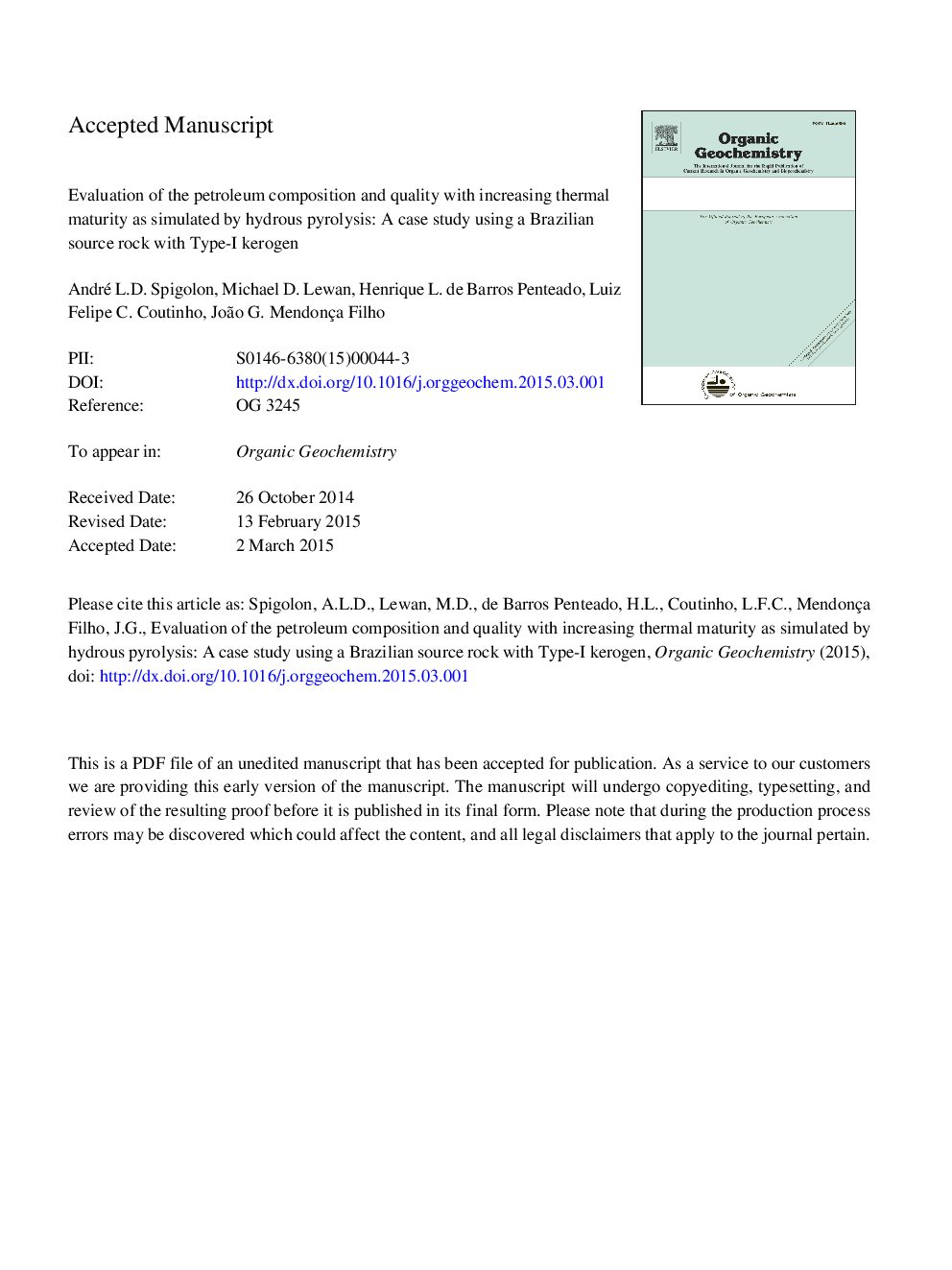| کد مقاله | کد نشریه | سال انتشار | مقاله انگلیسی | نسخه تمام متن |
|---|---|---|---|---|
| 5161620 | 1502278 | 2015 | 87 صفحه PDF | دانلود رایگان |
عنوان انگلیسی مقاله ISI
Evaluation of the petroleum composition and quality with increasing thermal maturity as simulated by hydrous pyrolysis: A case study using a Brazilian source rock with Type I kerogen
دانلود مقاله + سفارش ترجمه
دانلود مقاله ISI انگلیسی
رایگان برای ایرانیان
کلمات کلیدی
موضوعات مرتبط
مهندسی و علوم پایه
شیمی
شیمی آلی
پیش نمایش صفحه اول مقاله

چکیده انگلیسی
The petroleum composition and its quality (i.e., API gravity, gas/oil ratio, C15+ fractions, alkane distribution, and sulfur content) are affected by thermal maturation within the oil window. API gravity, C15+ fractions and gas/oil ratios generated by HP are similar to those of natural petroleum considered to be sourced from similar Brazilian lacustrine source rocks with Type I kerogen of Lower Cretaceous age. API gravity of the HP expelled oils shows a complex relationship with increasing thermal maturation that is most influenced by the expulsion of asphaltenes. C15+ fractions (i.e., saturates, aromatics, resins and asphaltenes) show that expelled oils and bitumen are compositionally separate organic phases with no overlap in composition. Gas/oil ratios (GOR) initially decrease from 508-131Â m3/m3 during bitumen generation and remain essentially constant (81-84Â m3/m3) to the end of oil generation. This constancy in GOR is different from the continuous increase through the oil window observed in anhydrous pyrolysis experiments. Alkane distributions of the HP expelled oils are similar to those of natural crude oils considered to be sourced from similar Brazilian lacustrine source rocks with Type I kerogen of Lower Cretaceous age. Isoprenoid and n-alkane ratios (i.e., pristane/n-C17 and phytane/n-C18) decrease with increasing thermal maturity as observed in natural crude oils. Pristane/phytane ratios remain constant with increasing thermal maturity through the oil window, with ratios being slightly higher in the expelled oils relative to those in the bitumen. Generated hydrocarbon gases are similar to natural gases associated with crude oils considered to be sourced from similar Brazilian lacustrine source rocks with Type I kerogen of Lower Cretaceous, with the exception of elevated ethane contents. The general overall agreement in composition of natural and hydrous pyrolysis petroleum of lacustrine source rocks observed in this study supports the utility of HP to better characterize petroleum systems and the effects of maturation and expulsion on petroleum composition and quality.
ناشر
Database: Elsevier - ScienceDirect (ساینس دایرکت)
Journal: Organic Geochemistry - Volumes 83â84, JuneâJuly 2015, Pages 27-53
Journal: Organic Geochemistry - Volumes 83â84, JuneâJuly 2015, Pages 27-53
نویسندگان
André L.D. Spigolon, Michael D. Lewan, Henrique L. de Barros Penteado, Luiz Felipe C. Coutinho, João G. Mendonça Filho,